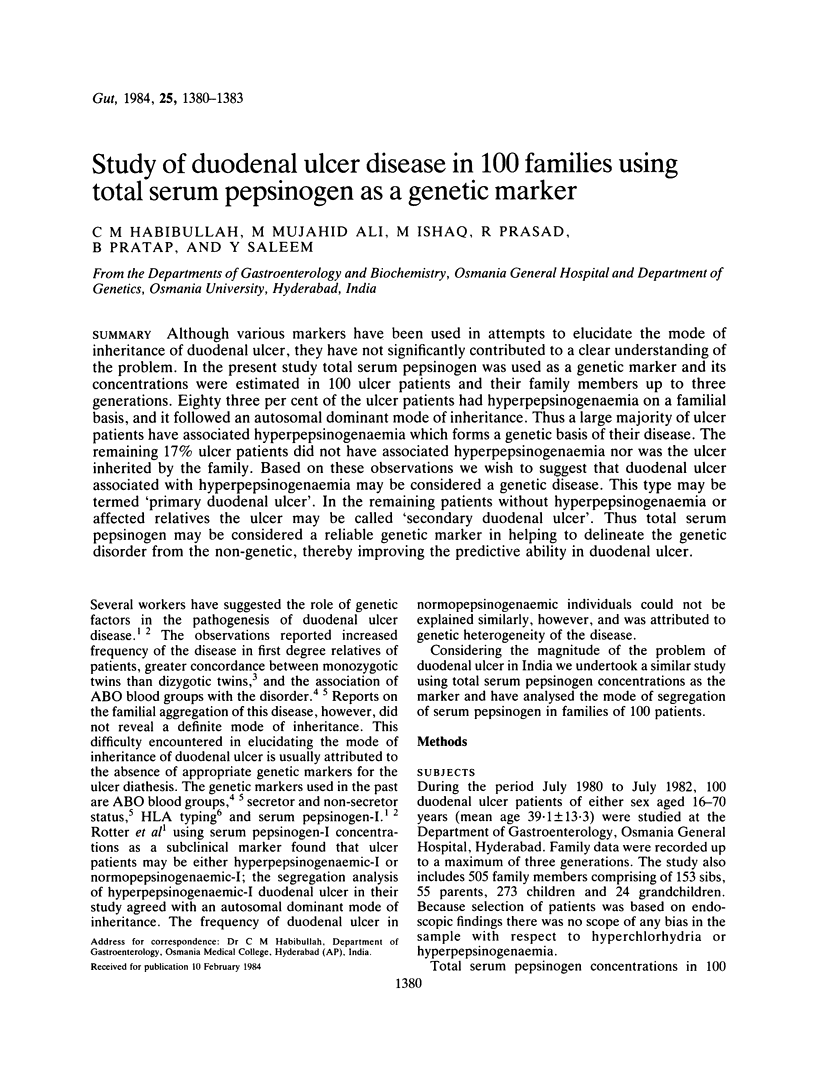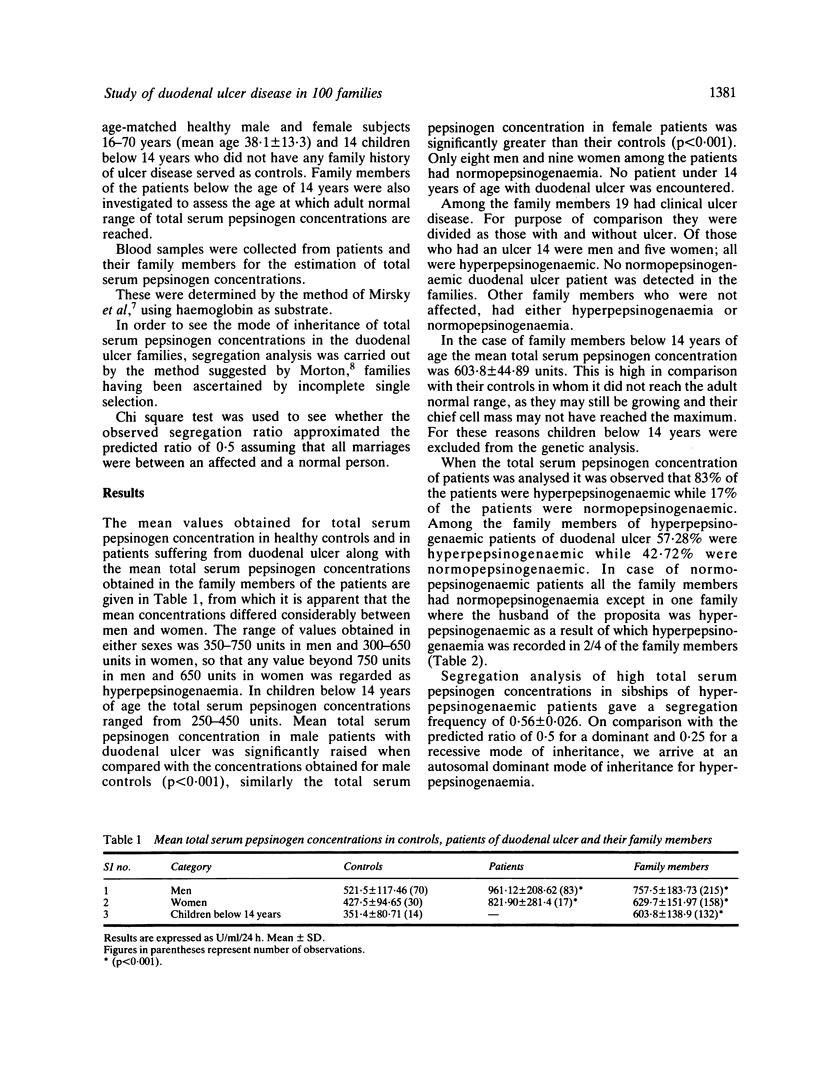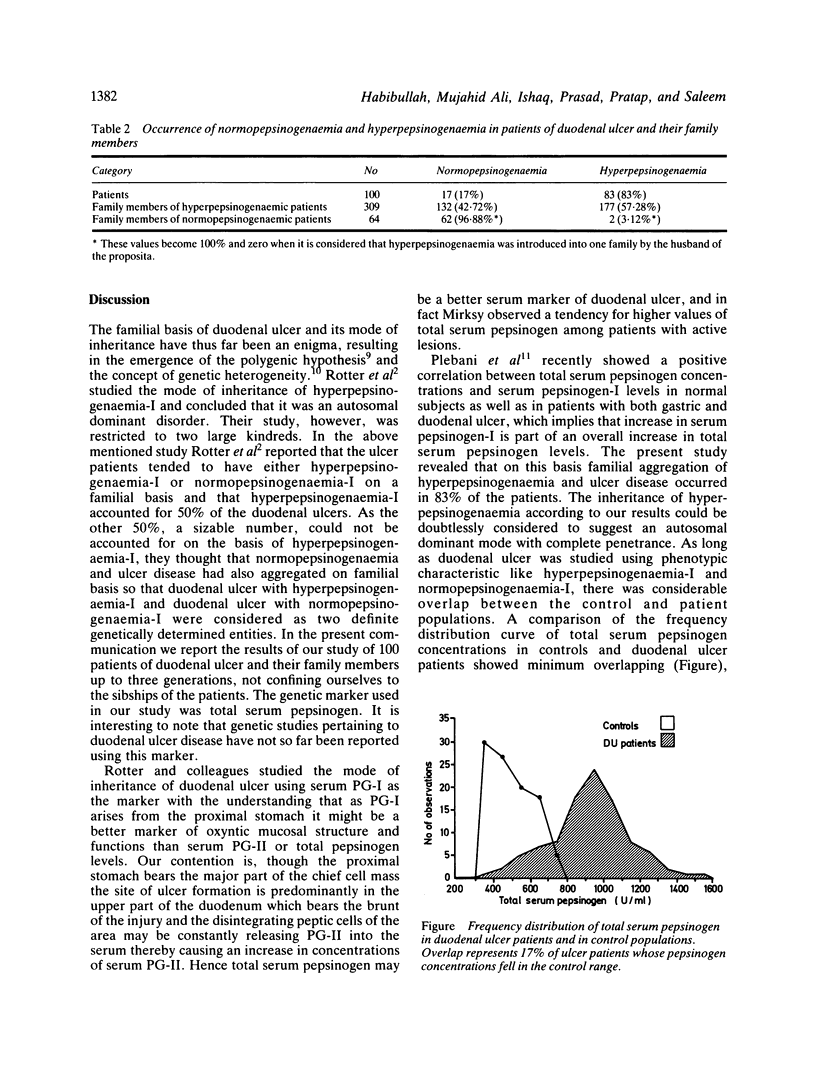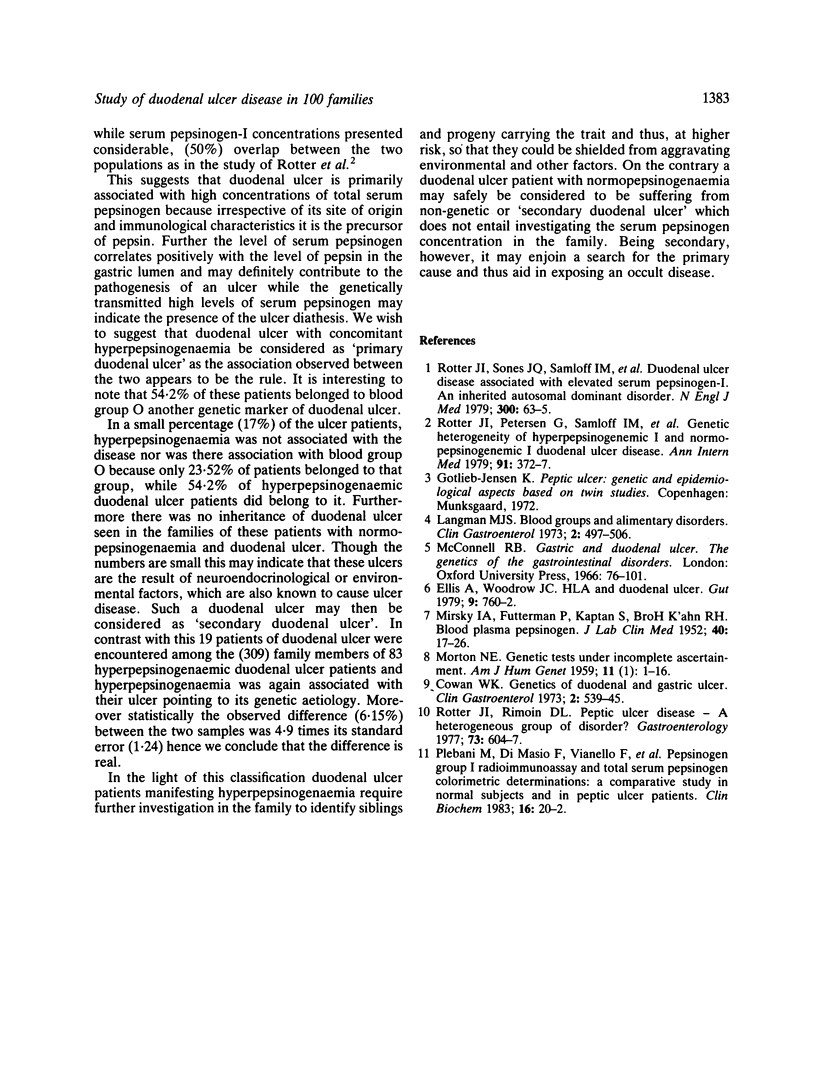Abstract
Although various markers have been used in attempts to elucidate the mode of inheritance of duodenal ulcer, they have not significantly contributed to a clear understanding of the problem. In the present study total serum pepsinogen was used as a genetic marker and its concentrations were estimated in 100 ulcer patients and their family members up to three generations. Eighty three per cent of the ulcer patients had hyperpepsinogenaemia on a familial basis, and it followed an autosomal dominant mode of inheritance. Thus a large majority of ulcer patients have associated hyperpepsinogenaemia which forms a genetic basis of their disease. The remaining 17% ulcer patients did not have associated hyperpepsinogenaemia nor was the ulcer inherited by the family. Based on these observations we wish to suggest that duodenal ulcer associated with hyperpepsinogenaemia may be considered a genetic disease. This type may be termed 'primary duodenal ulcer'. In the remaining patients without hyperpepsinogenaemia or affected relatives the ulcer may be called 'secondary duodenal ulcer'. Thus total serum pepsinogen may be considered a reliable genetic marker in helping to delineate the genetic disorder from the non-genetic, thereby improving the predictive ability in duodenal ulcer.
Full text
PDF



Selected References
These references are in PubMed. This may not be the complete list of references from this article.
- Ellis A., Woodrow J. C. HLA and duodenal ulcer. Gut. 1979 Sep;20(9):760–762. doi: 10.1136/gut.20.9.760. [DOI] [PMC free article] [PubMed] [Google Scholar]
- MIRSKY A., FUTTERMAN P., KAPLAN S., BROH-KAHN R. H. Blood plasma pepsinogen. I. The source, properties, and assay of the proteolytic activity of plasma at acid reactions. J Lab Clin Med. 1952 Jul;40(1):17–26. [PubMed] [Google Scholar]
- MORTON N. E. Genetic tests under incomplete ascertainment. Am J Hum Genet. 1959 Mar;11(1):1–16. [PMC free article] [PubMed] [Google Scholar]
- Plebani M., Di Mario F., Vianello F., Giordano A., Masiero M., Lazzaretto M., Farini R., Ceriotti G., Naccarato R. Pepsinogen Group I radioimmunoassay and total serum pepsinogen colorimetric determination: a comparative study in normal subjects and in peptic ulcer patients. Clin Biochem. 1983 Feb;16(1):20–22. doi: 10.1016/s0009-9120(83)94279-0. [DOI] [PubMed] [Google Scholar]
- Rotter J. I., Petersen G., Samloff I. M., McConnell R. B., Ellis A., Spence M. A., Rimoin D. L. Genetic heterogeneity of hyperpepsinogenemic I and normopepsinogenemic I duodenal ulcer disease. Ann Intern Med. 1979 Sep;91(3):372–377. doi: 10.7326/0003-4819-91-3-372. [DOI] [PubMed] [Google Scholar]
- Rotter J. I., Rimoin D. L. Peptic ulcer disease--a heterogeneous group of disorders? Gastroenterology. 1977 Sep;73(3):604–607. [PubMed] [Google Scholar]
- Rotter J. I., Sones J. Q., Samloff I. M., Richardson C. T., Gursky J. M., Walsh J. H., Rimoin D. L. Duodenal-ulcer disease associated with elevated serum pepsinogen I: an inherited autosomal dominant disorder. N Engl J Med. 1979 Jan 11;300(2):63–66. doi: 10.1056/NEJM197901113000203. [DOI] [PubMed] [Google Scholar]


